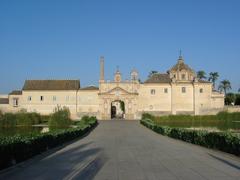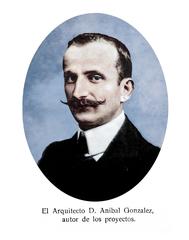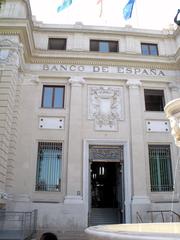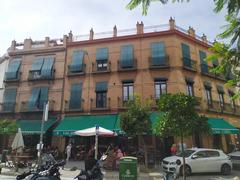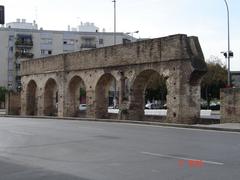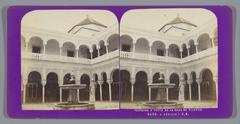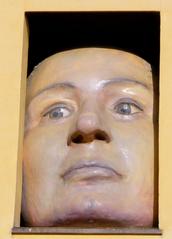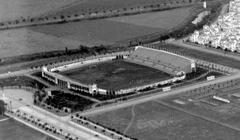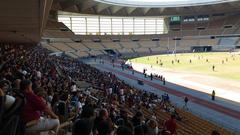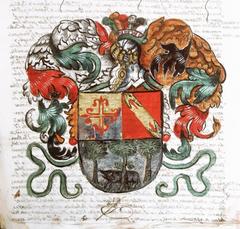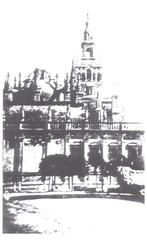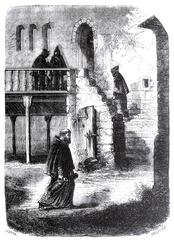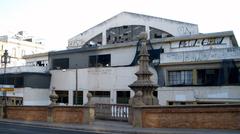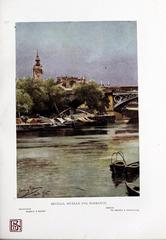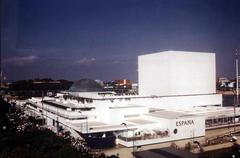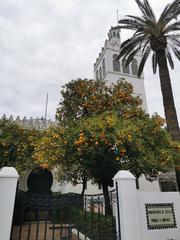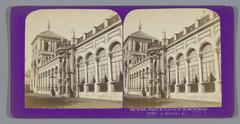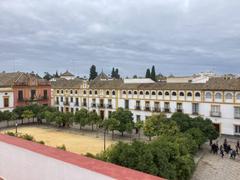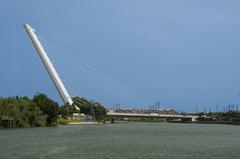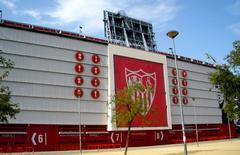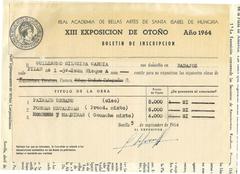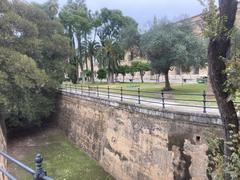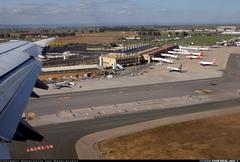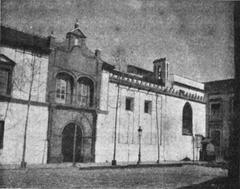Visiting Real Alcázar de Sevilla: Hours, Tickets, and Tips
Date: 16/07/2024
Introduction
The Real Alcázar de Sevilla, a UNESCO World Heritage Site, is one of Europe’s oldest palaces still in use. Located in the heart of Seville, Spain, this architectural marvel has captivated visitors for centuries with its rich history, intricate design, and lush gardens. Originating in the 10th century as a Muslim fortress, the Alcázar has undergone numerous transformations, making it a unique blend of Islamic, Gothic, Renaissance, and Baroque styles. Its significance extends beyond its architectural beauty, serving as the official residence of the Spanish royal family when they visit Seville and hosting various cultural events (Real Alcázar de Sevilla). This comprehensive guide aims to provide essential information for potential visitors, including historical insights, architectural highlights, and practical tips to enhance your visit.
Table of Contents
- [Introduction](#introductionintroduction)
- [History of Real Alcázar de Sevilla](#history-of-real-alcázar-de-sevillahistory-of-real-alcázar-de-sevilla)
- [Origins and Early Development](#origins-and-early-developmentorigins-and-early-development)
- [Almohad Period](#almohad-periodalmohad-period)
- [Christian Reconquest and Transformation](#christian-reconquest-and-transformationchristian-reconquest-and-transformation)
- [Mudejar Architecture and Pedro I](#mudejar-architecture-and-pedro-imudejar-architecture-and-pedro-i)
- [Renaissance and Baroque Additions](#renaissance-and-baroque-additionsrenaissance-and-baroque-additions)
- [Modern Era and Preservation](#modern-era-and-preservationmodern-era-and-preservation)
- [Contemporary Significance](#contemporary-significancecontemporary-significance)
- [Notable Architectural Features](#notable-architectural-featuresnotable-architectural-features)
- [Patio de las Doncellas](#patio-de-las-doncellaspatio-de-las-doncellas)
- [Salón de Embajadores](#salón-de-embajadoressalón-de-embajadores)
- [Casa de Contratación](#casa-de-contratacióncasa-de-contratación)
- [Jardines del Alcázar](#jardines-del-alcázarjardines-del-alcázar)
- [Visiting Tips](#visiting-tipsvisiting-tips)
- [Visiting Hours](#visiting-hoursvisiting-hours)
- [Tickets](#ticketstickets)
- [Guided Tours](#guided-toursguided-tours)
- [Photography](#photographyphotography)
- [Accessibility](#accessibilityaccessibility)
- [Weather](#weatherweather)
- [FAQ](#faqfaq)
- [Real Alcázar de Sevilla Visiting Hours](#real-alcázar-de-sevilla-visiting-hourswhat-are-the-real-alcázar-de-sevilla-visiting-hours)
- [Ticket Costs](#ticket-costshow-much-do-tickets-to-the-real-alcázar-de-sevilla-cost)
- [Accessibility](#accessibilityis-the-real-alcázar-de-sevilla-accessible-for-people-with-mobility-issues)
- [Conclusion](#conclusionconclusion)
- [References](#referencesreferences)
History of Real Alcázar de Sevilla
Origins and Early Development
The Real Alcázar de Sevilla’s origins date back to the early Middle Ages, around the 10th century, when the site was initially developed as a fort by the Muslim rulers of the Iberian Peninsula. The first significant construction was the Abbadid palace, built by the Muslim Abbadid dynasty in the 11th century. This early structure laid the foundation for the complex that would evolve over the centuries.
Almohad Period
During the 12th century, the Almohad Caliphate, which ruled over much of North Africa and the Iberian Peninsula, made significant contributions to the Alcázar. The Almohads expanded the palace complex and introduced elements that would become characteristic of Andalusian architecture, such as intricate stucco work, horseshoe arches, and lush gardens. The Almohad influence is still visible in parts of the Alcázar, particularly in the Patio del Yeso and the remnants of the original fortifications.
Christian Reconquest and Transformation
The turning point in the history of the Alcázar came in 1248 when Ferdinand III of Castile captured Seville during the Reconquista. The Christian monarchs began to transform the Muslim fortress into a royal palace. Alfonso X, Ferdinand’s son, initiated the construction of the Gothic Palace, which incorporated elements of the existing Islamic architecture while introducing Gothic features. This period marked the beginning of the Alcázar’s transformation into a symbol of the Christian reconquest and the blending of cultural influences.
Mudejar Architecture and Pedro I
One of the most significant phases in the Alcázar’s history occurred during the reign of Pedro I of Castile in the 14th century. Known as Pedro the Cruel, he commissioned the construction of the Palacio de Don Pedro, a masterpiece of Mudejar architecture. Mudejar refers to the style developed by Muslim artisans working under Christian rule, characterized by intricate tilework, wooden ceilings, and elaborate plasterwork. The Palacio de Don Pedro is renowned for its stunning courtyards, such as the Patio de las Doncellas and the Patio de las Muñecas.
Renaissance and Baroque Additions
The Alcázar continued to evolve during the Renaissance and Baroque periods. In the 16th century, Charles V added the Renaissance-style Casa de Contratación, which served as the administrative center for the Spanish colonies in the Americas. The Casa de Contratación housed the archives and maps related to the New World, highlighting the Alcázar’s role in Spain’s global empire.
During the 17th and 18th centuries, the Alcázar underwent further modifications, including the addition of Baroque elements. The Salón de los Tapices, or Tapestry Room, is a notable example of this period, featuring large tapestries depicting scenes from the conquest of Tunis by Charles V.
Modern Era and Preservation
In the 19th and 20th centuries, the Real Alcázar de Sevilla faced challenges related to preservation and restoration. The palace complex suffered from neglect and damage, particularly during the Napoleonic Wars and the Spanish Civil War. However, efforts to restore and preserve the Alcázar gained momentum in the late 19th century, led by architects such as Rafael Contreras and Aníbal González.
Contemporary Significance
Today, the Real Alcázar de Sevilla serves as both a historical monument and a functioning royal residence. It is the official residence of the Spanish royal family when they visit Seville, making it one of the oldest continuously used royal palaces in Europe. The Alcázar’s rich history and architectural splendor attract millions of visitors each year, making it one of Spain’s most popular tourist destinations.
The palace complex is also a cultural hub, hosting events, exhibitions, and concerts that celebrate Seville’s artistic and historical heritage. The gardens of the Alcázar, with their fountains, pavilions, and lush greenery, provide a serene escape for visitors and locals alike.
Notable Architectural Features
Patio de las Doncellas
This courtyard, also known as the Courtyard of the Maidens, is a prime example of Mudejar architecture. It features a central reflecting pool surrounded by intricate arches and stucco work. The name is derived from a legend that claimed the Moors demanded 100 virgins as tribute from the Christian kingdoms.
Salón de Embajadores
The Hall of Ambassadors is the most opulent room in the Alcázar. It served as the throne room and is adorned with a magnificent dome, intricate tilework, and lavish decorations. The hall’s design reflects the fusion of Islamic and Christian artistic traditions.
Casa de Contratación
This Renaissance building played a crucial role in Spain’s colonial administration. It housed the archives and maps related to the New World and served as the headquarters for the Spanish trade with the Americas.
Jardines del Alcázar
The gardens of the Alcázar are a highlight for many visitors. They feature a blend of Moorish, Renaissance, and modern landscaping, with fountains, pavilions, and a wide variety of plants. The gardens provide a tranquil setting for leisurely strolls and offer stunning views of the palace.
Visiting Tips
Visiting Hours
The Real Alcázar de Sevilla is usually open from 9:30 AM to 7:00 PM. However, hours may vary, so it’s advisable to check the official website for the latest updates.
Tickets
It is advisable to purchase tickets in advance online to skip the long queues. Standard ticket prices are around €11.50, with discounts available for students, seniors, and children. Visit the official website of the Real Alcázar de Sevilla (Real Alcázar Tickets) for booking tickets.
Guided Tours
Consider taking a guided tour to gain deeper insights into the history and architecture of the Alcázar. Many tours are available in multiple languages.
Photography
Photography is allowed in most areas of the Alcázar, but the use of tripods and flash is generally prohibited. Be respectful of the site’s rules and other visitors.
Accessibility
The Alcázar is partially accessible to visitors with mobility issues. Some areas, particularly the upper floors and certain garden sections, may be challenging to navigate.
Weather
Seville can get very hot, especially in the summer months. Wear comfortable clothing, stay hydrated, and use sunscreen to protect yourself from the sun.
FAQ
What are the Real Alcázar de Sevilla visiting hours?
The palace is usually open from 9:30 AM to 7:00 PM. Check the official website for the most up-to-date hours.
How much do tickets to the Real Alcázar de Sevilla cost?
Standard tickets are around €11.50, with various discounts available.
Is the Real Alcázar de Sevilla accessible for people with mobility issues?
The Alcázar is partially accessible; some areas may be challenging to navigate.
Conclusion
The Real Alcázar de Sevilla offers a rich tapestry of history, architecture, and culture. Whether you’re a history buff, an architecture enthusiast, or simply looking for a serene place to visit, this palace has something for everyone. Don’t forget to book your tickets in advance and consider taking a guided tour for a more enriching experience.
For more travel tips and updates, follow us on social media and check out our other articles on Seville’s historical sites.
